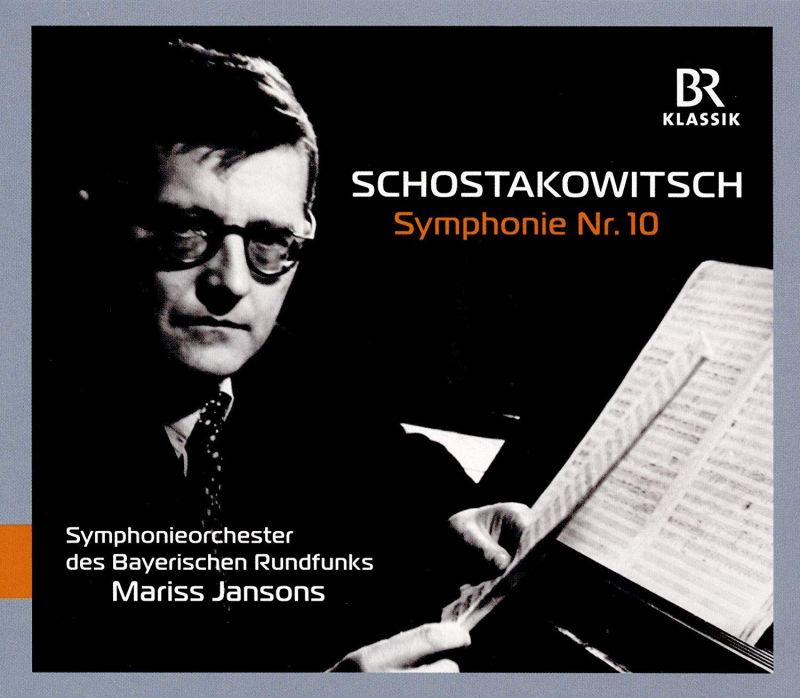SHOSTAKOVICH Symphony No 10 (Jansons)
View record and artist detailsRecord and Artist Details
Composer or Director: Dmitri Shostakovich
Genre:
Orchestral
Label: BR Klassik
Magazine Review Date: 01/2020
Media Format: CD or Download
Media Runtime: 54
Mastering:
DDD
Catalogue Number: 900185

Tracks:
| Composition | Artist Credit |
|---|---|
| Symphony No. 10 |
Dmitri Shostakovich, Composer
Dmitri Shostakovich, Composer Mariss Jansons, Conductor Symphonieorchester des Bayerischen Rundfunks |
Author: Peter Quantrill
What you might call the Mahlerisation of Shostakovich continues its grim march onwards. Forty and fifty years ago, it was enough for conductors to keep a piece like the Scherzo of the Tenth together and on the move and for orchestras to play the guts out of it. ‘A portrait of Stalin’ – as relayed by Solomon Volkov – was all we thought we needed to know by way of context. Now the portrait must be fleshed out, flecked with detail, loaded up with Austro-German symphonic baggage. Perhaps modern maestros have ruefully acknowledged that they won’t out Mravinsky Mravinsky (Warner, 6/92). Or time (the passing thereof, but also the temper of our own) has robbed interpreters as well as listeners of a living connection to music that once spoke plainly to listeners far beyond its place of origin.
At any rate, while Beethoven performances have become ever more tightly lashed to the metronome, it is peculiar to find Shostakovich subjected to the kind of false equation of slow and massive equals profound equals desirable for which mid-century recordings of Classical-era repertoire are commonly deplored. It is difficult to imagine anyone happy with one of the late Mariss Jansons’s previous recordings (from Philadelphia, 6/95, and Amsterdam, 8/13) feeling compelled to update their collection, or any listener previously unpersuaded by the conductor’s pursuit of beauty above all suddenly experiencing a road-to-Damascus moment where the Tenth Symphony is concerned.
Unlike Zhdanov’s cultural policy for the Central Committee, Gramophone pushes no party line, but previous verdicts of ‘sterile … spiritually disengaged’ and ‘too urbane’ hold for the newcomer from Munich. Marginally slower in each movement and more fallible – a tiny smear in the third chord of the Scherzo is one instance, a momentary loss of coordination at 6'15" into the finale is another – it brings the compensations of a three-dimensional sound stage and a deep-pile string section.
Or are they drawbacks? The Philadelphia recording made by EMI engineers now feels authentically dry, taut and urgent by comparison. In Munich, Jansons moulds the slow introduction to the finale with an ever more refined touch, and a weight and density to rival Karajan’s Berliners. Even returning to Karajan’s digital-era remake (DG, 8/90), however, is like turning up an old family photo album; the portamento, the rough intensity, the creeping menace of the Allegro belong almost to another age. Almost alone among 21st-century Tenths, the RLPO and Vasily Petrenko (Naxos, 9/16) roll back the years.
Discover the world's largest classical music catalogue with Presto Music.

Gramophone Digital Club
- Digital Edition
- Digital Archive
- Reviews Database
- Full website access
From £8.75 / month
Subscribe
Gramophone Full Club
- Print Edition
- Digital Edition
- Digital Archive
- Reviews Database
- Full website access
From £11.00 / month
Subscribe
If you are a library, university or other organisation that would be interested in an institutional subscription to Gramophone please click here for further information.




